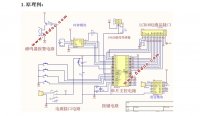基于单片机的液晶显示万年历设计(任务书,开题报告,外文翻译,论文13000字)
摘要
随着科技的快速发展,人类从观日晷、摆钟到现在电子钟,不断研究,不断创新。本文设计了一种基于STC89C52单片机的多功能电子万年历。设计由数据显示模块、温度采集模块、时间处理模块、语音播报模块、调整设置模块和电源模块六个模块组成。系统以STC89C52单片机为控制器,以时钟日历芯片DS1302记录日历和时间,还具有闹钟整点报时等多种功能。温度采集选用DS18B20芯片。万年历采用直观的数字显示,数据显示采用1602A液晶显示模块,可以在LCD上同时显示年、月、日、周日、时、分、秒,还具有时间校准等功能。此万年历具有读取方便、显示直观、功能多样、电路简洁、成本低廉等诸多优点,具有广阔的市场前景。
关键字:单片机 万年历 液晶显示
The liquid crystal display Calendar Based SCM
Abstract
This paper introduces the based on STC89C52 multi-function electronic calendar of the hardware structure and software and hardware design method. This design by data display module, temperature acquisition module, time processing module ,voice broadcast module and set module five modules. With STC89C52 single-chip microcomputer system for the controller to serial clock calendar chip DS1302 record calendar and time, it can be to date and time, minutes and seconds for the time, also has a leap year compensation and other functions. Temperature gathering choose DS18B20 chip, calendar by using object digital display, data showed that the 1602 A liquid crystal display module, can be in the LCD shows at the same time year, month, day, Sunday, when, minutes and seconds, still have time calibration etc. Function. This calendar has read the convenient, direct display, functional diversity, simple circuit, low cost, and many other advantages, has a broad market prospect.
Key words:SCM;Calendar;LCD display
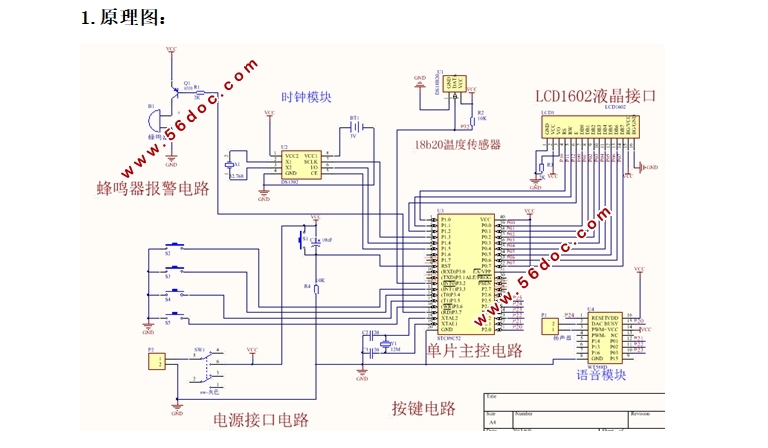
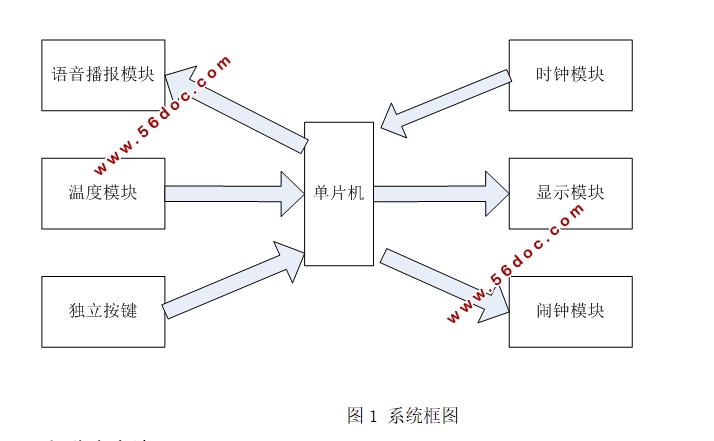
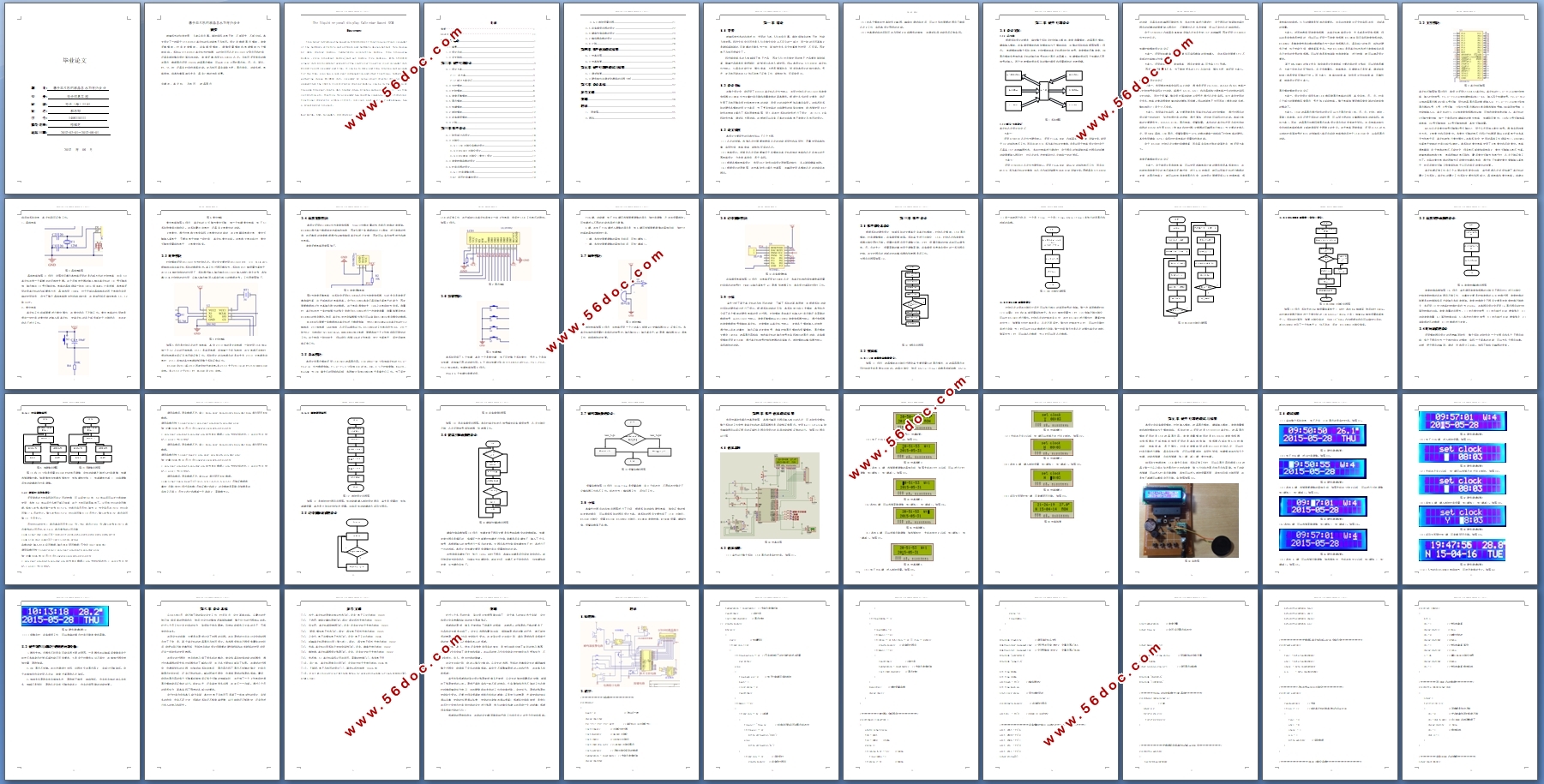
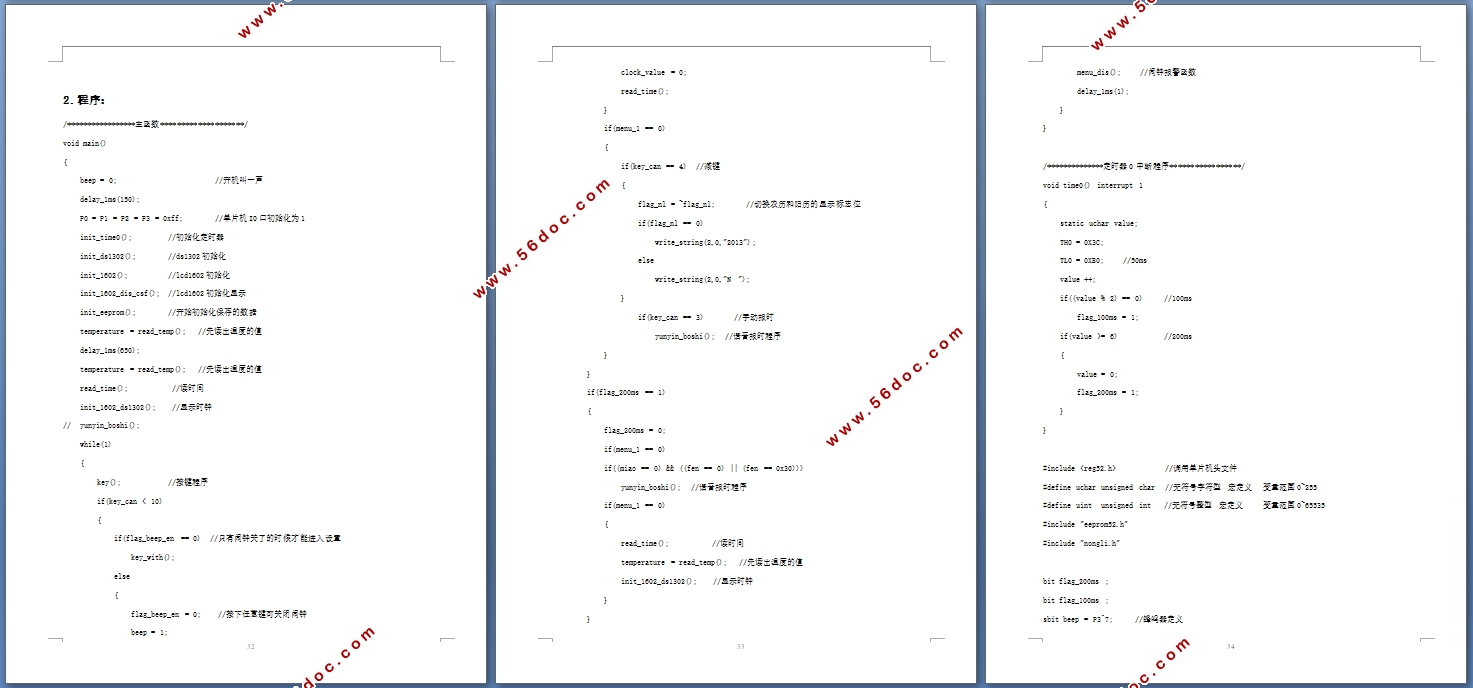
目录
摘要 I
Abstract II
第一章 绪论 1
1.1 背景 1
1.2 设计目标 1
1.3 论文结构 1
第二章 硬件电路设计 3
2.1 设计方案 3
2.1.1 总方案 3
2.1.2部分方案论证 3
2.2 主控模块 6
2.3 时钟模块 8
2.4 温度采集模块 9
2.5 显示模块 10
2.6 按键模块 11
2.7 闹钟模块 12
2.8 语音播报模块 13
2.9 小结 13
第三章 软件设计 14
3.1 软件部分总设计 14
3.2 初始化 14
3.2.1 LCD初始化函数的设计 14
3.2.2 DS1302初始化设计 15
3.2.3 DS18B20初始化(复位)设计 17
3.3 温度转换函数的设计 18
3.4时间流程的设计 18
3.4.1 时间调整流程 19
3.4.2 农历时间算法设计 19
3.4.3 闹钟设置流程 21
3.5 语音播报流程的设计 22
3.6 键盘扫描函数的设计 23
3.7 蜂鸣器函数的设计 24
3.8 小结 24
第四章 软件仿真调试结果 25
4.1 仿真总图 25
4.2 仿真结果 25
第五章 硬件电路的调试与结果 28
5.1 调试结果 29
5.2 硬件制作与调试中遇到的问题分析 31
第六章 设计总结 32
参考文献 33
致谢 34
附录 35
1. 原理图 35
2.程序 35
|
